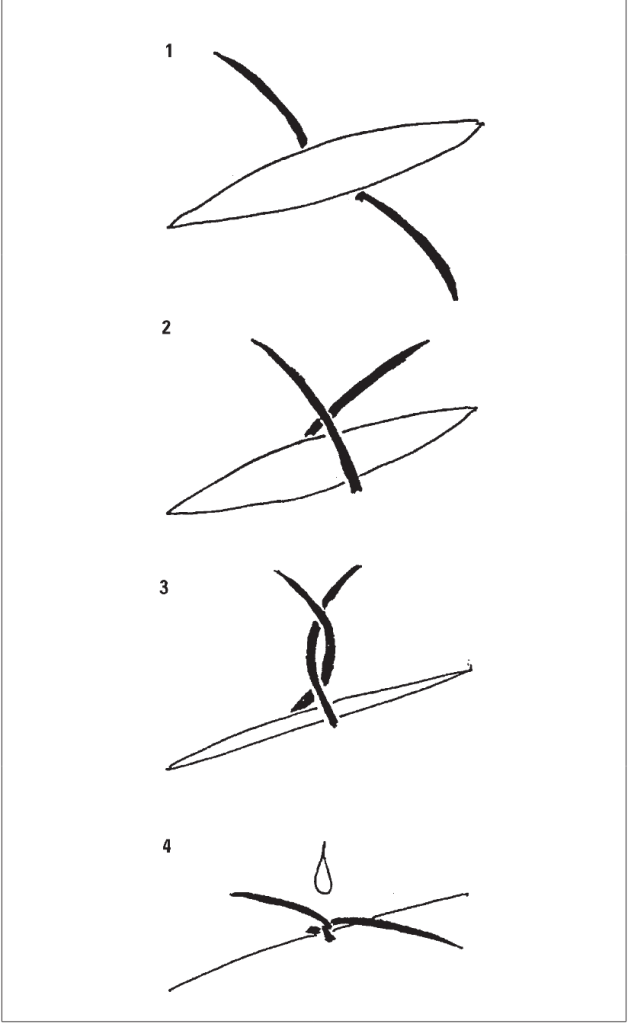A HAT (Hair Apposition Technique) Trick
Written by Mike Barsky
Lacerations are one of the most common reasons patients present to the ED. Most lacerations require primary closure to avoid infection and achieve a functional and aesthetically pleasing scar. Patients want a repair that is quick, painless, cheap, w/ a low infection rate and minimal scarring. For us, an ideal method is one that is quick, results in high patient satisfaction, and has a low risk of infection/injury to the provider. Traditional methods include suturing, stapling, skin closure tapes, and tissue adhesives.
Enter the Hair Apposition Technique
In 2002, a group of ED docs in Singapore published an RCT detailing a new technique called hair apposition for primary wound closure in hair-bearing areas of the scalp. Essentially you use the hair as sutures. In their study, 189 patients w/ linear scalp lacs were repaired with either hair apposition or standard suturing. The conclusion was that hair apposition is equally acceptable and maybe even superior to standard suturing for closing suitable scalp lacerations. Advantages include fewer complications, a shorter procedure time, less pain, no need for shaving or removal of stitches, similar or superior wound healing, and better patient feedback [1]. They then completed a second study in 2008, but this time every lac was repaired w/ hair apposition. Repairs were performed either by a nurse or a physician. There were no significant differences in all short-term outcomes between the doctors and nurses except for the length of the procedure (few min dif).
Indications
- Linear scalp lac <10cm
- Lac is in a hair-bearing area
- Hair length >1-3 cm (length depends who you ask; can use kelly clamps to help)
Contraindications
- Lac > 10cm
- Lac is not linear
- Significant wound tension
- Wound grossly contaminated
- Active bleeding (hair apposition does not generate hemostasis)
- Unstable pt
- Altered pt
Technique
- Anesthetize the lac. Try LET (Lidocaine-epinephrine-tetracaine) gel
- Twist together 3-7 strands of hair on one side of the wound
- Repeat on the opposite side of the wound
- Take the two groups of hair and twist them aroud one another 360 degrees 2-3 times
- Secure the intertwined hair bundles by applying a few drops of a tissue adhesive
- Can repeat alont the length of the lac as needed
Patient Instructions:
No need to come back, glue will break down in about a week. Don’t wash hair for 2 days.
Final Thoughts
I have done this in my practice several times with great wound approximation and literally 0 pain. I like this a lot in peds patients; they tolerate the procedure really well, and the parents appreciate it too.
See below for a diagram of the technique:

References
Hock MOE, Ooi SBS, Saw SM, Lim SH. “A randomized controlled trial comparing the hair apposition technique with tissue glue to standard suturing in scalp lacerations (HAT study).” Ann Emerg Med. 2002;40(1):19-26.
Ong MEH, Chan YH, Teo J, et al. “Hair apposition technique for scalp laceration repair: a randomized controlled trial comparing physicians and nurses (HAT 2 study).” Am J Emerg Med. 2008;26(4):433-438.
